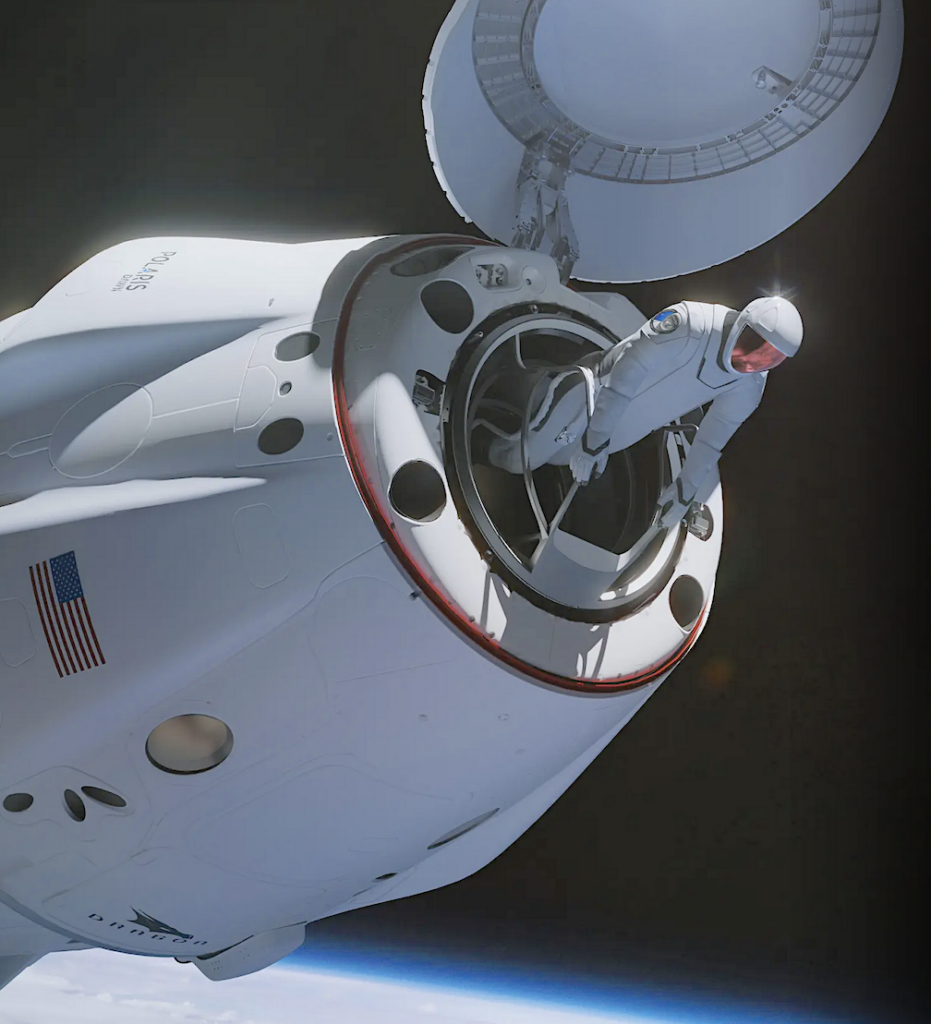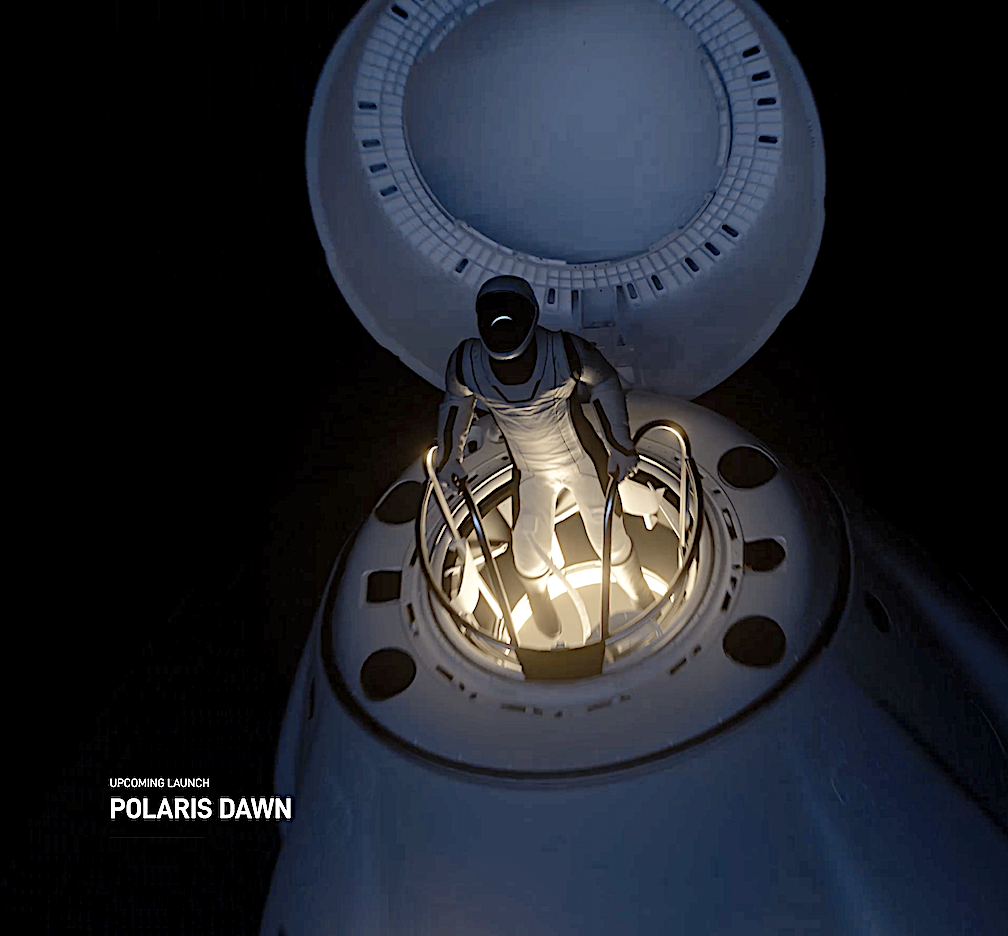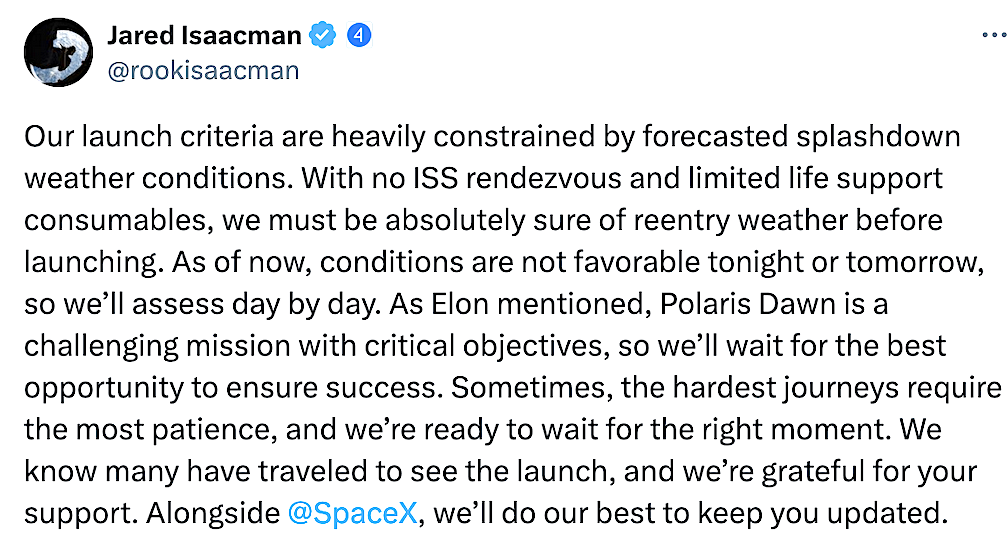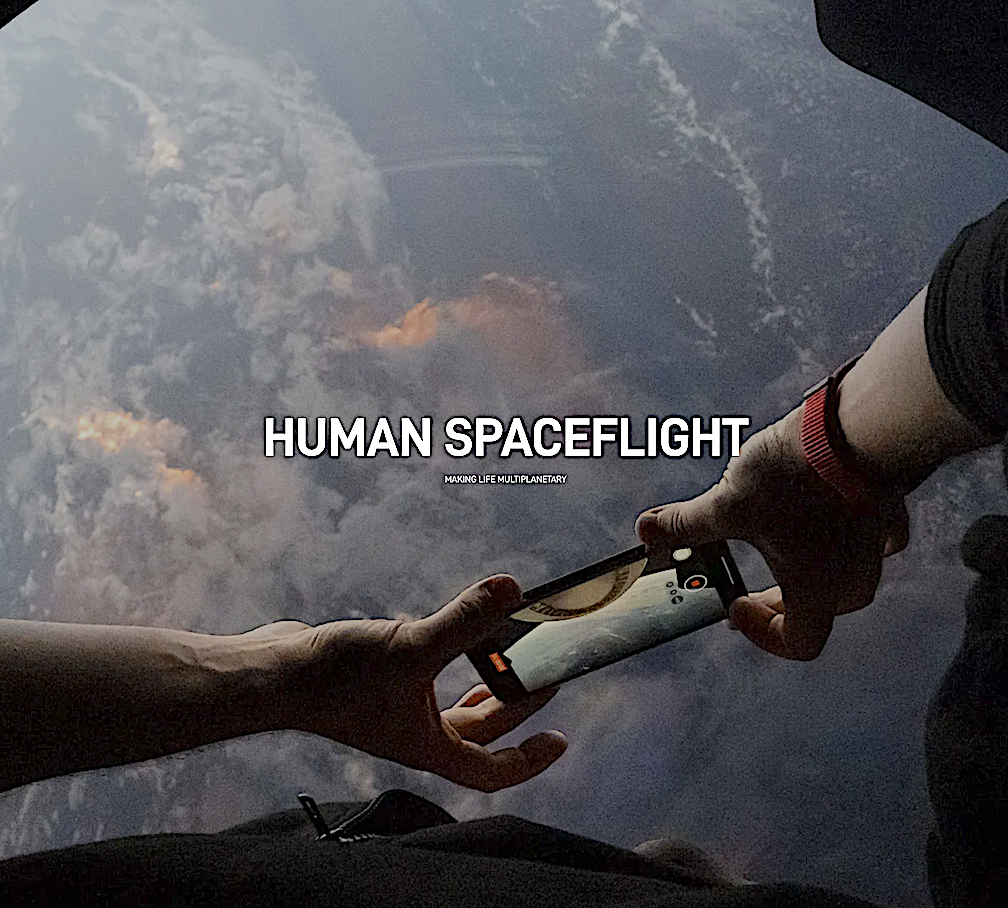
SpaceX’s Polaris Dawn mission is now looking at Friday as the launch date. The company had originally received permission from the Federal Aviation Administration to launch early Wednesday morning, with a backup date of Thursday morning, but according to the FAA, the launch will now wait until early Friday morning from 12:38 AM – 4:09 AM PDT.
While the Polaris Dawn’s crew will attempt the first spacewalk of private astronauts, using spacesuit technology developed by SpaceX, they will also test laser-based communications with satellite broadband provider Starlink. CEO Elon Musk plans this as part of an effort to pave the way for travel to places including Mars.
The risks are very real as the crew will attempt to achieve the highest orbit of Earth ever recorded and will pass through heavy radiation and risk potentially significant damage from small space rocks and debris.
During their multi-day mission to orbit, Dragon and the crew will endeavor to reach the highest Earth orbit ever flown since the Apollo program and participate in the first-ever extravehicular activity (EVA) by commercial astronauts wearing SpaceX-developed EVA suits. They will also conduct 36 research studies and experiments from 31 partner institutions designed to advance both human health on Earth and during long-duration spaceflight, and test Starlink laser-based communications in space.
SpaceX files new launch schedule with FAA for Polaris Dawn as first available window opens

A new launch date for SpaceX’s Polaris Dawn Mission is set after crews were delayed several times due to system checks, a helium leak, and most recently, unfavorable weather. SpaceX filed a new launch schedule with the Federal Aviation Administration, with the first window opening at 3:38 a.m. on Wednesday, September 4.
This is a project that has suffered numerous delays over years, from November and December 2022, March 2023, April 2024, early summer 2024, August 26 and 27.

Then the most recent delay from August 28 due to poor recovery weather at the end of the planned mission timeline.
Scott Poteet from Durham, New Hampshire, is the mission pilot. In a post on X, Poteet said he’s hopeful for a clear launch day.

SpaceX finally has a new date for Polaris Dawn to achieve the highest Earth orbit since the Apollo

Weather conditions are anticipated to be clear for a projected launch date of Polaris Dawn, SpaceX’s Falcon 9 rocket that will launch Crew Dragon spacecraft on September 1 at 3:38 a.m. EDT (0738 UTC) from LC-39A, Kennedy Space Center, Florida. This is a project that has suffered numerous delays over years, from November and December 2022, March 2023, April 2024, early summer 2024, August 26 and 27.
Then the most recent delay from August 28 due to poor recovery weather at the end of the planned mission timeline.n
During their multi-day mission to orbit, Dragon and the crew will endeavor to reach the highest Earth orbit ever flown since the Apollo program and participate in the first-ever extravehicular activity (EVA) by commercial astronauts wearing SpaceX-developed EVA suits. They will also conduct 36 research studies and experiments from 31 partner institutions designed to advance both human health on Earth and during long-duration spaceflight, and test Starlink laser-based communications in space.

The Polaris Dawn crew will combine their expertise, knowledge, and passion for spaceflight to further human space exploration. This will be the first human spaceflight for Mission Pilot Kidd Poteet, Mission Specialist Sarah Gillis, and Mission Specialist and Medical Officer Anna Menon. The Polaris Dawn mission will be commanded by billionaire Jared Isaacman, making his second trip to space. He will be joined on the all-private mission by pilot Scott “Kidd” Poteet, and SpaceX employees Sarah Gillis and Anna Menon. The first stage booster B1083 is making its fourth flight and will land on the drone ship “A Shortfall of Gravitas” about nine and a half minutes after launch. The Crew Dragon will return to a splashdown at sea. Billionaire, Mission Commander Jared Isaacman previously flew to space as commander of Inspiration4. This will also be the first time two SpaceX employees will be part of a human spaceflight crew, providing valuable insight to future missions on the road to making life multiplanetary.

The first stage booster B1083 is making its fourth flight and will land on the drone ship “A Shortfall of Gravitas” about nine and a half minutes after launch. The Crew Dragon will return to a splashdown at sea.
